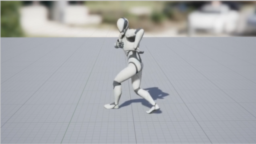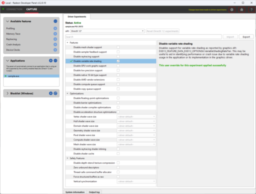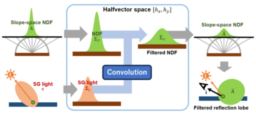- the article presents a detailed look at the quality aspects that relate to animation
- shows the importance of sampling rate for human motion
- presents the impact of data precision on animation playback
- additionally, it presents a detailed discussion of animation data sets and develops what is required for high-quality research results

- the presentation provides an overview of the difficulties related to the composition of GPU graphics techniques
- presents how Use.GPU tries to solve the problems by making composition a first-class design goal
- presents how implementation details require completely different implementations
- shows solutions to the problems discussed

- the paper proposes the use of tetrahedrons as primitives for volume rendering using mesh shaders
- uses mesh shaders to compute the depths of the front and back faces at the same time when interpolating vertex attributes and passing both depths to the rasterizer stage
- additionally presents how to use the same idea to implement SDF tracing

General Arcade, a porting and co-development studio that has worked with a wide range of clients, from indies to AAA developers and publishers, including Larian, From Software, Capcom, Devolver Digital, TinyBuild, and others, is seeking a Software Engineer with a rendering emphasis.
This is a great opportunity to work with a passionate engineering team on cutting-edge industry technologies.

- the paper proposes an anisotropic specular image-based lighting method that can serve as a drop-in replacement for bent normal techniques
- derives an analytic formula to determine the two closest and two farthest points from the reflected direction on an approximation of the BRDF confidence region boundary
- compares the method against bent normal technique and ground truth using the GGX specular BRDF

- the blog post introduces the new Driver Experiments
- this tool allows developers to enable/disable hardware features as well as optimization flags
- the post explains what features are exposed and what these options control

- This paper presents an approximation of the importance based on spherical Gaussians (SGs) for light clusters
- Each light cluster is represented as an SG light and analytically approximates the product integral of the SG light and a BRDF
- presents how to use the method to reduce the MC variance for many light scenes

- the video presents how to implement the rendering of a shader-based continuous grid system
- explains how to generate the grid from a shader, deal with antialiasing, vary the grid sizes with distances, and much more
- the implementation is shown and provided using OpenGL

Thanks to Manish Mathai for support of this series.
Would you like to see your name here too? Become a Patreon of this series.